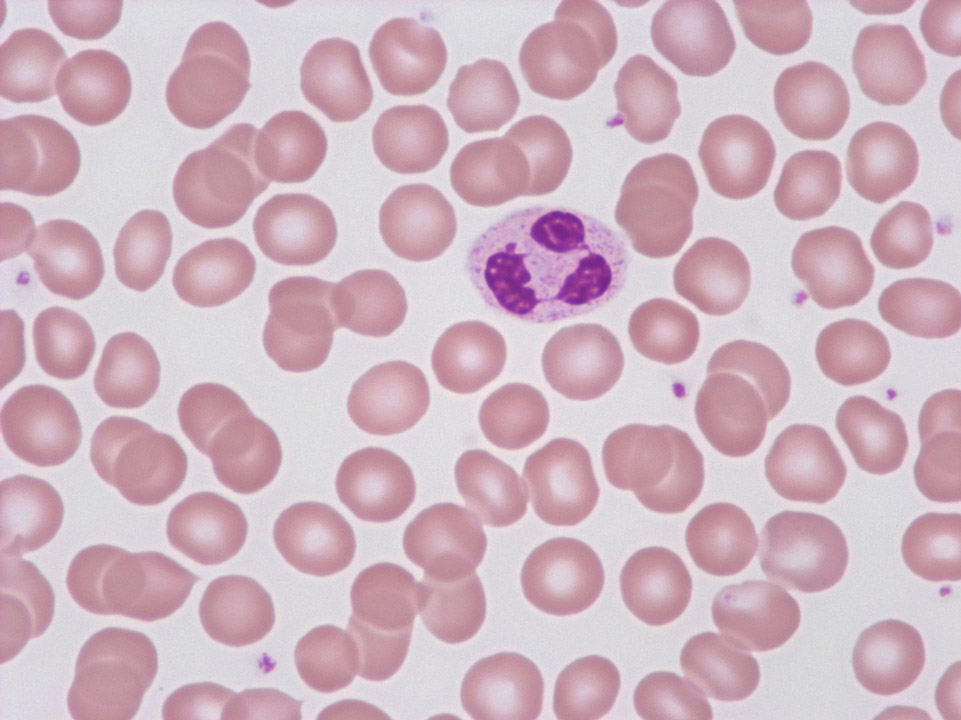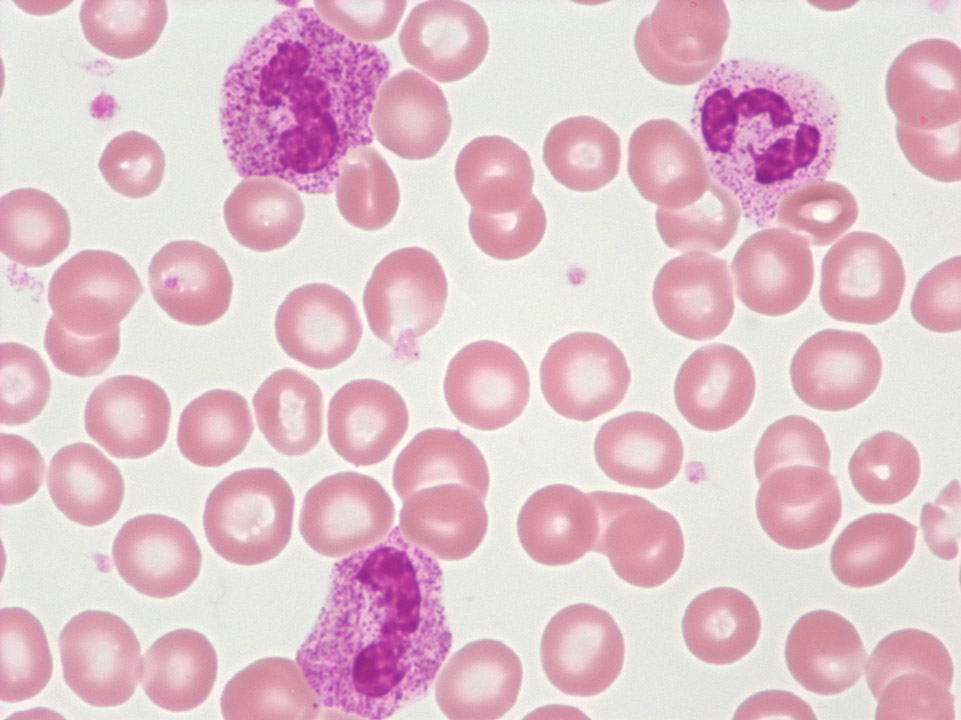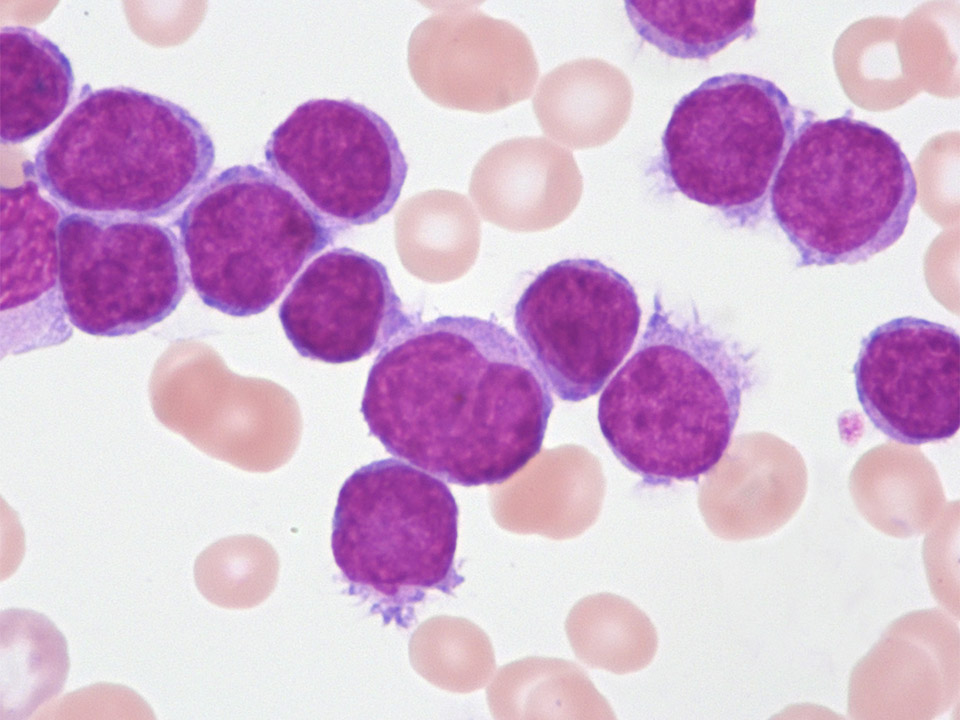Scientific Image Gallery
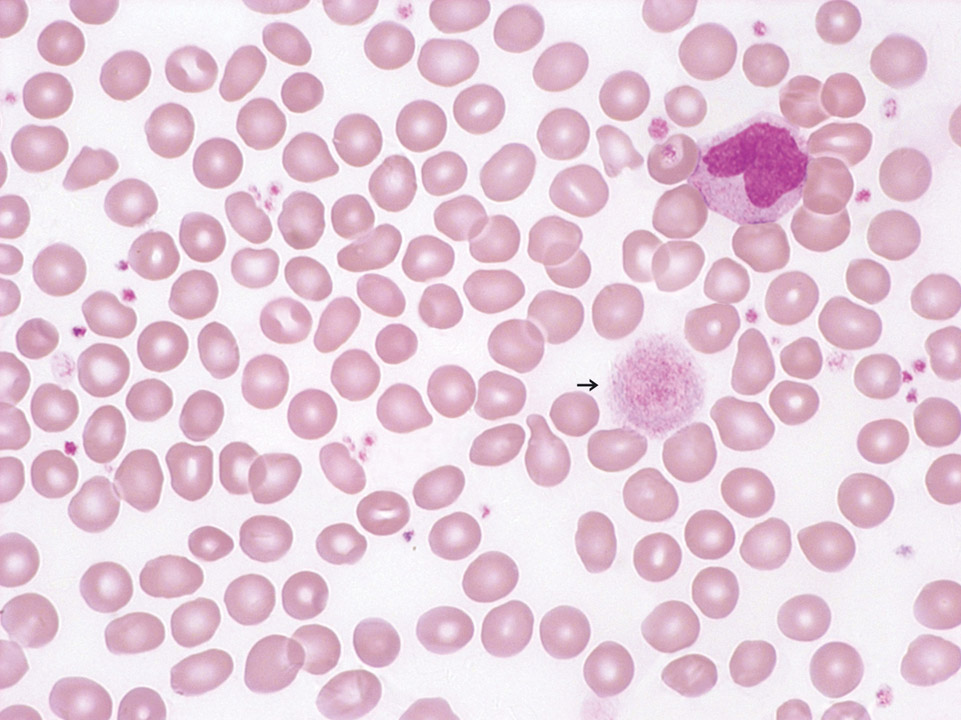
Peripheral blood (May-Grünwald-Giemsa stain) of a patient with essential thrombocythaemia, ET. Giant platelets (->) are frequently observed in this disease.
<p>Peripheral blood (May-Grünwald-Giemsa stain) of a patient with essential thrombocythaemia, ET. Giant platelets (->) are frequently observed in this disease.</p>
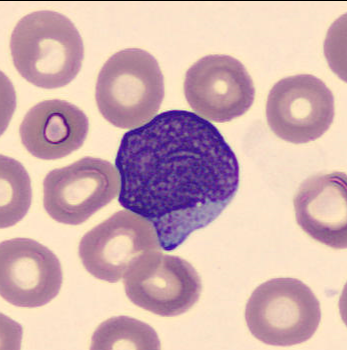
Granulated blasts have a size of 12 - 16 µm and show significant reddish granules in their cytoplasm. The shape of the nucleus is round or oval with a very high nucleocytoplasmic ratio of 70 – 95%.
The chromatin is predominantly regularly distributed and neither clumped nor condensed. The nucleus has a varying number of nucleoli which may be hidden by the chromatin.
<p>Granulated blasts have a size of 12 - 16 µm and show significant reddish granules in their cytoplasm. The shape of the nucleus is round or oval with a very high nucleocytoplasmic ratio of 70 – 95%. </p> <p>The chromatin is predominantly regularly distributed and neither clumped nor condensed. The nucleus has a varying number of nucleoli which may be hidden by the chromatin. </p>
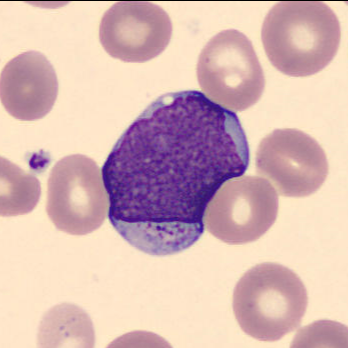
Granulated blasts have a size of 12 – 16 µm and show significant reddish granules in their cytoplasm. The shape of the nucleus is round or oval with a very high nucleocytoplasmic ratio of 70 – 95%.
The chromatin is predominantly regularly distributed and neither clumped nor condensed. The nucleus has a varying number of nucleoli which may be hidden by the chromatin.
<p>Granulated blasts have a size of 12 – 16 µm and show significant reddish granules in their cytoplasm. The shape of the nucleus is round or oval with a very high nucleocytoplasmic ratio of 70 – 95%. </p> <p>The chromatin is predominantly regularly distributed and neither clumped nor condensed. The nucleus has a varying number of nucleoli which may be hidden by the chromatin. </p>
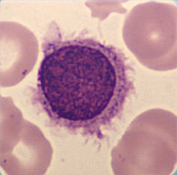
Cell description:
Size: larger than normal lymphocytes
Nucleus: round, oval, dumbbell-shaped or bilobed with little chromatin condensation and sometimes indistinct nucleolus
Cytoplasm: abundant weakly basophilic with irregular “hairy” margins
<p>Cell description: </p> <p>Size: larger than normal lymphocytes </p> <p>Nucleus: round, oval, dumbbell-shaped or bilobed with little chromatin condensation and sometimes indistinct nucleolus </p> <p>Cytoplasm: abundant weakly basophilic with irregular “hairy” margins</p>
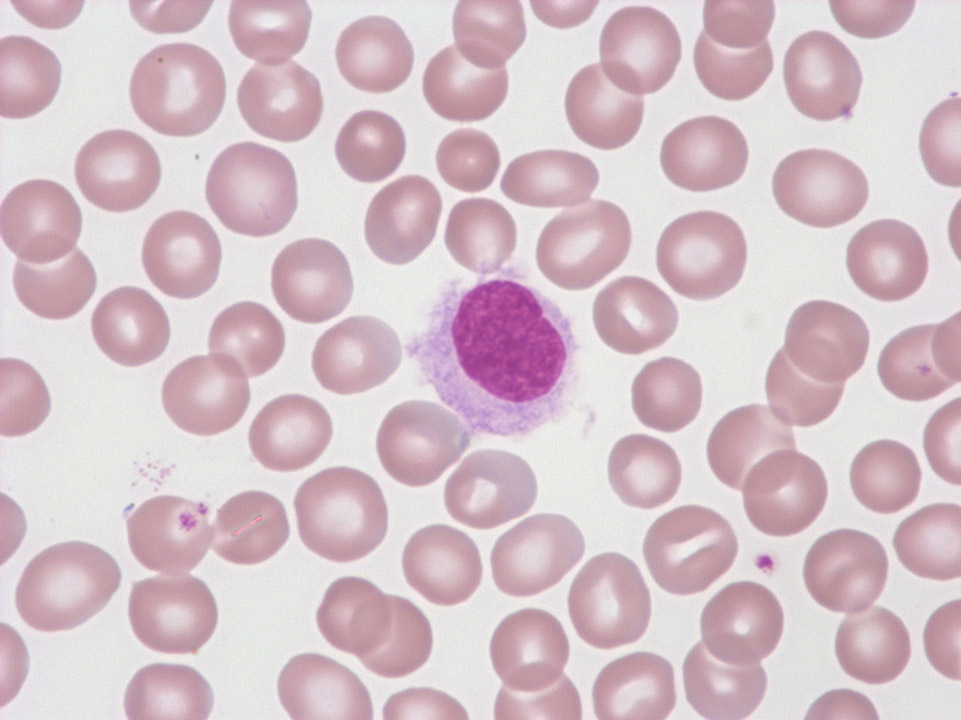
Hairy cell from a hairy cell leukaemia. Typical are the monocytic type nuclei with loose chromatin, and the grey-blue, heterogeneous cytoplasm. The hairy protrusions may be missing in some cases.
<p>Hairy cell from a hairy cell leukaemia. Typical are the monocytic type nuclei with loose chromatin, and the grey-blue, heterogeneous cytoplasm. The hairy protrusions may be missing in some cases.</p>
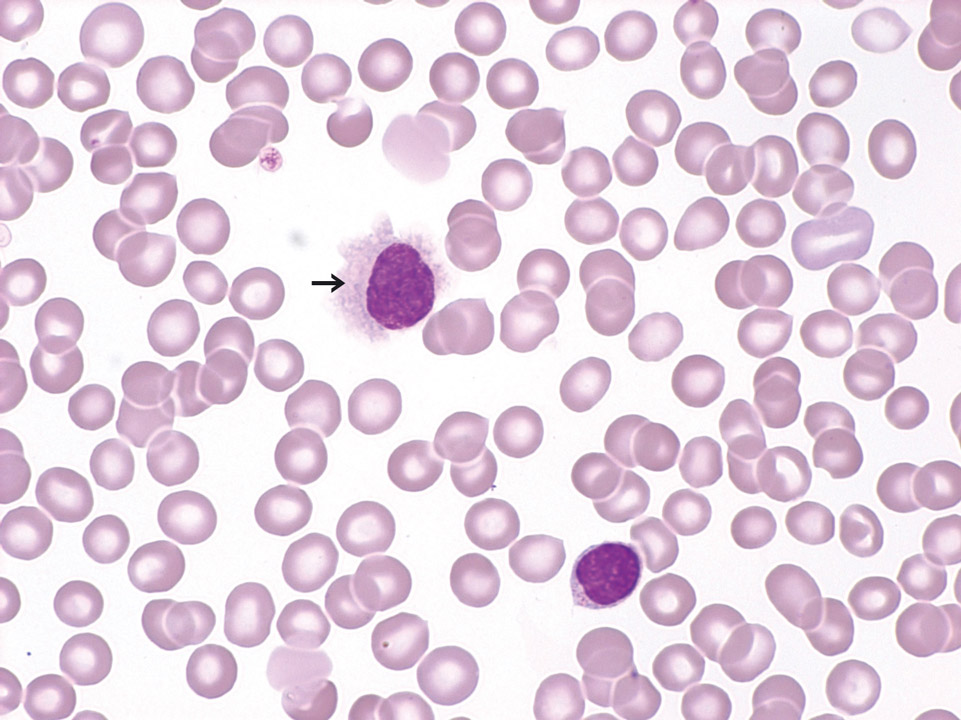
Peripheral blood (May-Grünwald-Giemsa stain) of a patient with hairy cell leukaemia. A typical hairy cell (->) can easily be distinguished from a normal lymphocyte (lower right).
<p>Peripheral blood (May-Grünwald-Giemsa stain) of a patient with hairy cell leukaemia. A typical hairy cell (->) can easily be distinguished from a normal lymphocyte (lower right).</p>
